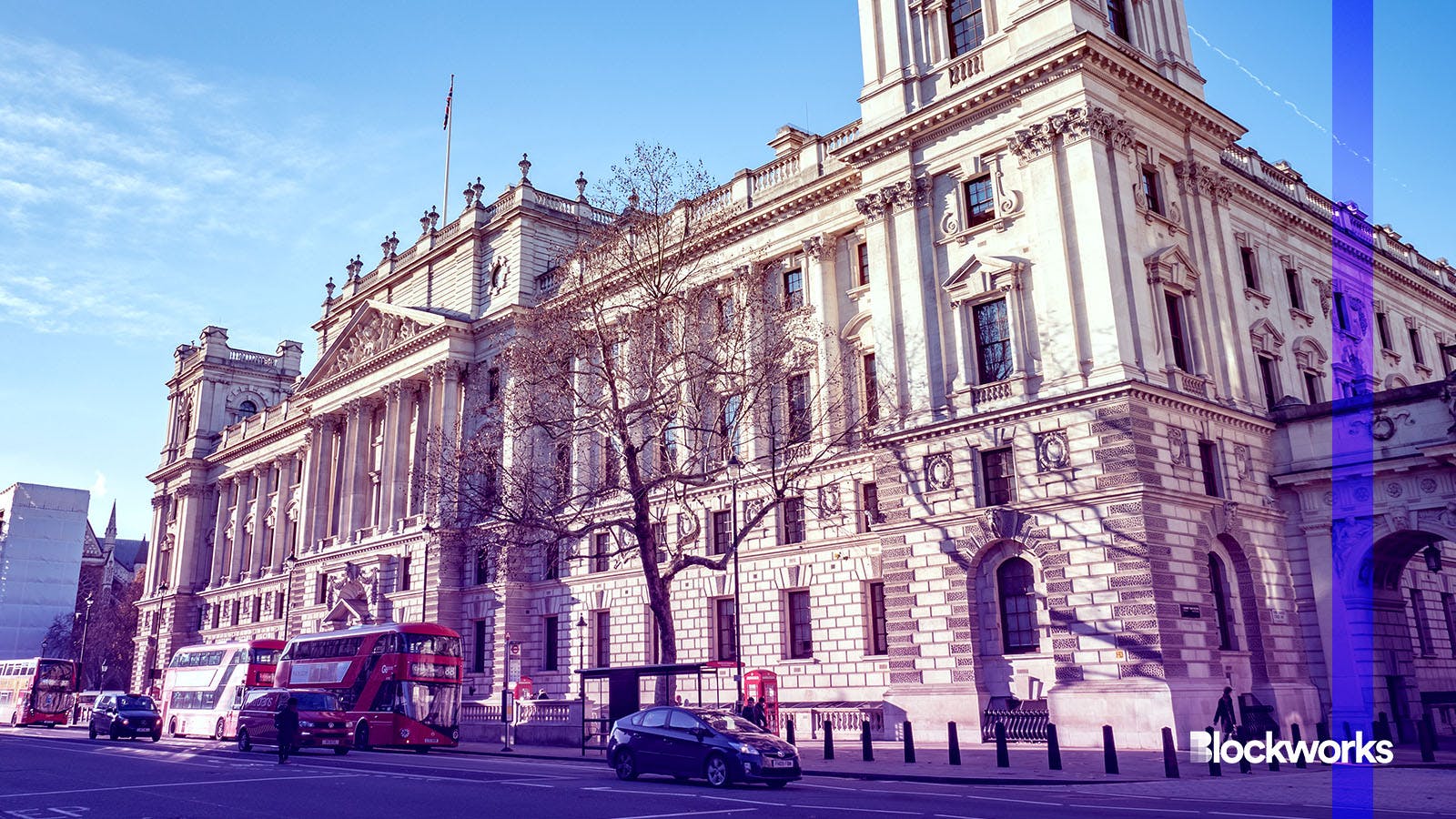UK Treasury reveals final blueprint for crypto, stablecoin governance
The government plans a phased approach to regulations, starting with fiat-backed stablecoins for payment, followed by broader cryptoasset oversight

pxl.store/Shutterstock, modified by Blockworks
The UK Treasury unveiled definitive proposals for regulating cryptoassets and stablecoins on Monday.
The government intends to implement regulations in stages, beginning with the oversight of fiat-backed stablecoins for payment.
The subsequent phase will address the wider cryptoasset sector, as outlined in two policy documents.
These suggestions come after a consultation released in February about the upcoming financial services regulatory structure for cryptoassets in the UK.
Numerous companies and stakeholders actively participated in the consultation, offering insights to refine the government’s proposed approach.
“While most aspects of our proposals were well-received by the large majority of respondents, we have modified certain features of our future framework to take onboard the evidence presented,” Andrew Griffith, economic secretary to the Treasury, said in a statement.
The Treasury aims to regulate fiat-backed stablecoins in two key areas: their use in payment systems and their issuance and storage within the UK, regardless of specific applications.
The suggested regulations will place specific fiat-backed stablecoins under the oversight of the Bank of England, the Financial Conduct Authority (FCA) and the Payment Systems Regulator (PSR).
Together, they will work to reduce potential harm to consumers and address the conduct, financial stability and other risks associated with these stablecoins, especially when used for transactions.
The Treasury also detailed plans to regulate broader crypto-related actions, such as trading, custody and lending. This consultation suggested frameworks for market misconduct, as well as issuing and disclosing cryptoassets.
The government reiterated that it does not support regulating unbacked cryptoassets as gambling. This stance would ensure consistency with international standards and practices of key regions, including the EU, it said.
The Treasury plans to introduce secondary legislation promptly, aiming for early 2024, depending on the parliamentary schedule. This legislation will encompass activities from both phases.
Get the news in your inbox. Explore Blockworks newsletters:
- The Breakdown: Decoding crypto and the markets. Daily.
- 0xResearch: Alpha in your inbox. Think like an analyst.






